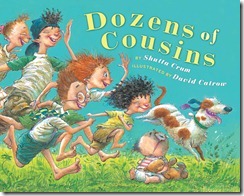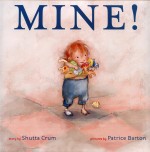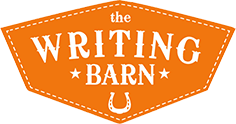Today, at The Writing Barn blog, we welcome picture book author, novelist, teacher and poet, Shutta Crum to discuss intention. Our own as writers and of course, our characters.
Opening the Door to Intention
by Shutta Crum
Intention: it’s a two-faced word. It makes all the difference in the world—and, ultimately, it doesn’t. Let me explain . . .
It is a necessary word when I wake up in the morning. What do I intend to get accomplished today? When I sit down to write, how much and exactly what do I want to have finished before I rise? What do I intend my characters, my scenes, my language to do? And at night . . . how I berate myself! Perhaps I failed to write a single word—or even, think about writing. Then, intention is an incubus that howls with crazed laughter when I dare to call myself “a writer.”
When I do write, intention is critical. Crafting my characters, I need to know what each one’s intentions are so I can intertwine them and build the overall structure of the story, scene by scene. (And often, I don’t discover their real intentions until I’ve done a complete draft or two—whether what I am working on is a novel, or a picture book, or a poem.)
How do you get a grasp on fictional character intentions? Well . . . first, you start off simply assigning what seems like the correct intention for that character based on the background research you’ve done. Let’s say your main character (MC) needs to get home before his father dies. That’s his primary intention.

Ok. You start writing your scenes. His path crosses with others who prevent him from hurrying home, you make him choose between two honorable tasks which undermines his own intentions, etc. (You’re using all the good things you’ve learned about plotting.) Then, all of a sudden you get the urge to have your MC turn onto a path you hadn’t expected him to take. (This is good. You should be open to serendipity and surprise while you write.) But now, you slowly begin to discover that your MC’s real intention is not just to get home to see his father before he dies, but to get home and make sure the will gets changed in your MC’s favor before the old man croaks.
What happens is a process of discovery; the more you write the clearer all your characters’ intentions become. And as I said, that may not happen for a draft—or two, or three . . . . Then you can begin to honestly revise. Yes, that’s a lot of work wandering around lost for a good deal of time to get clear on intention. But it is intention that drives creation—not heart, not pathos, not laughter, not noble causes, not even plot. It is the combined characters’ intentions that create all of those. And in fact, it should be slow work.
It’s the slow reveal of multi-faceted intentions that’s critically important to sustain your reader’s attention. It’s the surprises, the freshness, the sudden-about faces, and the realistic humbling bumbling toward enlightenment that entices and keeps a reader—as well as the satisfying ending that either rewards or thwarts your characters’ intentions.
All of this every-day BIC (butt in chair) work on intention is critical, as I said. But it’s also, ultimately, not important. (Hey! Embrace the ambiguity—as writer Uma Krishnaswami says. Enjoy the about-face.)
When your book is out, your poem published, your play performed, your music sung, or your artwork viewed, intention—like an untrustworthy friend—takes a scamper. Whatever you, as the creator of your work, intended your creation to do does not matter in the least. All that’s important is the perception, reception, and then personally-altered conception of it by your audience.
I’ve gotten reviews that made me scratch my head and say, “Oh! Is that what I wrote?” I had no idea. And that is okay!

Art is a personal experience. My intentions should, rightly, have no effect on anyone interacting with my art. The audience can, and
does, internalize the art. My readers compare my work against a multitude of life experiences and bases of knowledge—whatever the age of those readers. And then, my art is changed. That is good. Art is not static. The gestalt of it whirls through your audience like unseen radio waves bouncing around crazily, re-energizing itself, or not, and then zooming on . . . to become . . . who knows? And isn’t that the point?
Tomorrow, I’ll wake and write—or not. I’ll greet my fickle friend, Intention, at the door and realize that although I do not trust him, I do appreciate—and need—him.
 Shutta Crum writes picture books, novels and poetry. She is also a storyteller, a public speaker, a librarian and a teacher. Her poems and articles have appeared in many journals. In 2005, she was honored by being invited to the White House for the Easter Egg Roll. In 2010 she toured American military base schools across Japan. Her book, THUNDER-BOOMER! (Clarion) was an Amer. Library Assoc. and a Smithsonian Magazine “Notable Book.” MINE! (Albert A. Knopf) was listed as one of the best board books of the year by the NY Times. Her newest book, DOZENS OF COUSINS (Clarion) came out in July, 2013.
Shutta Crum writes picture books, novels and poetry. She is also a storyteller, a public speaker, a librarian and a teacher. Her poems and articles have appeared in many journals. In 2005, she was honored by being invited to the White House for the Easter Egg Roll. In 2010 she toured American military base schools across Japan. Her book, THUNDER-BOOMER! (Clarion) was an Amer. Library Assoc. and a Smithsonian Magazine “Notable Book.” MINE! (Albert A. Knopf) was listed as one of the best board books of the year by the NY Times. Her newest book, DOZENS OF COUSINS (Clarion) came out in July, 2013.
